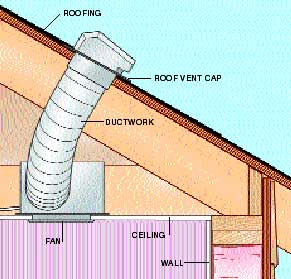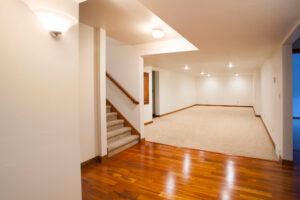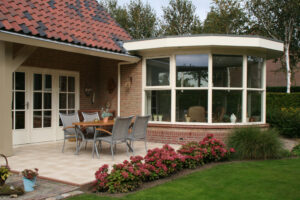Reduce mold and mildew with proper bathroom fan vent installation
With all the talk of mold, contractors pay close attention to problem areas of your house. Inspections of Indianapolis homes turn up a wide variety of issues in areas such as bathrooms, basements, crawlspaces and attics. Moisture problems in these areas often lead to the growth and build up of mold and mildew.
In the attic space, one of the most common problems we see is improper ducting of bathroom ventilation fans. Bathroom fans are designed to extract moist, humid air out of the bathroom where they can cause damage and out of the home. However, some contractors and weekend warrier DIY’ers sometimes skip a critical step. We have found, on many occassions, that the vents extend and terminate in the attic space. Sure, it’s out of the interior of the house right? WRONG! Doing so can cause mold and mildew which can form on the roof rafters, ceiling joists, underside of the roof decking or sheathing and even on the drywall of the ceiling below.
A properly installed bathroom fan vent duct should extend out and up through the roof structure to do it’s job correctly. It is also acceptable to vent a bathroom fan out through a sidewall, however DO NOT place a vent near any vent inlet, such as a soffit vent…keep reading. Another misconception is that it is ok to terminate the duct out through the soffit. This can cause problems also. The humid air can be sucked back in to an adjacent soffit vent and cause the same issues of mold and mildew that ducting directly in the attic space can cause.
So, for proper ventilation, be sure your bathroom ventilation fan ductwork extends out through your roof. And, if your wondering, rigid metal ductwork is more desirable than flexible ductwork. It may cost a little more, but it will ensure the ductwork does not sag, which can trap moisture. (image by hometips.com)
For any questions, contact a reputable Indianapolis area remodel contractor and get their advice.





